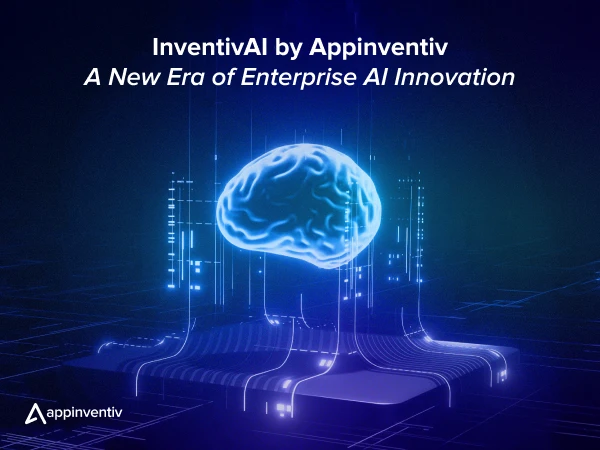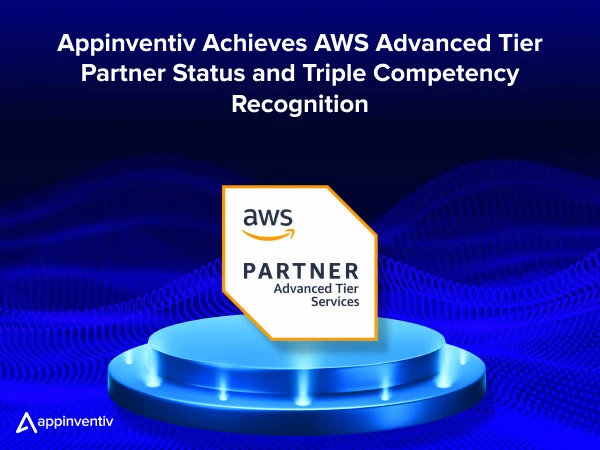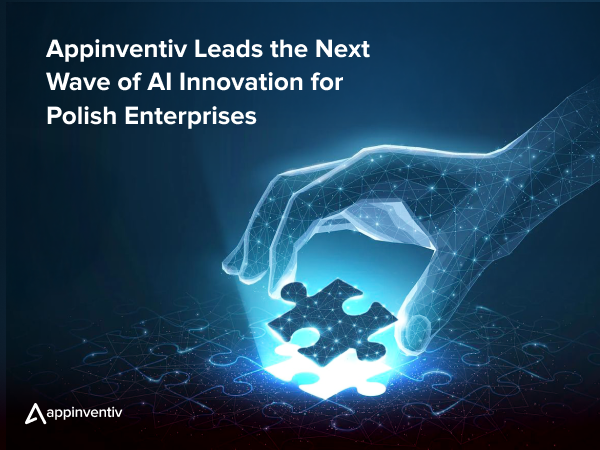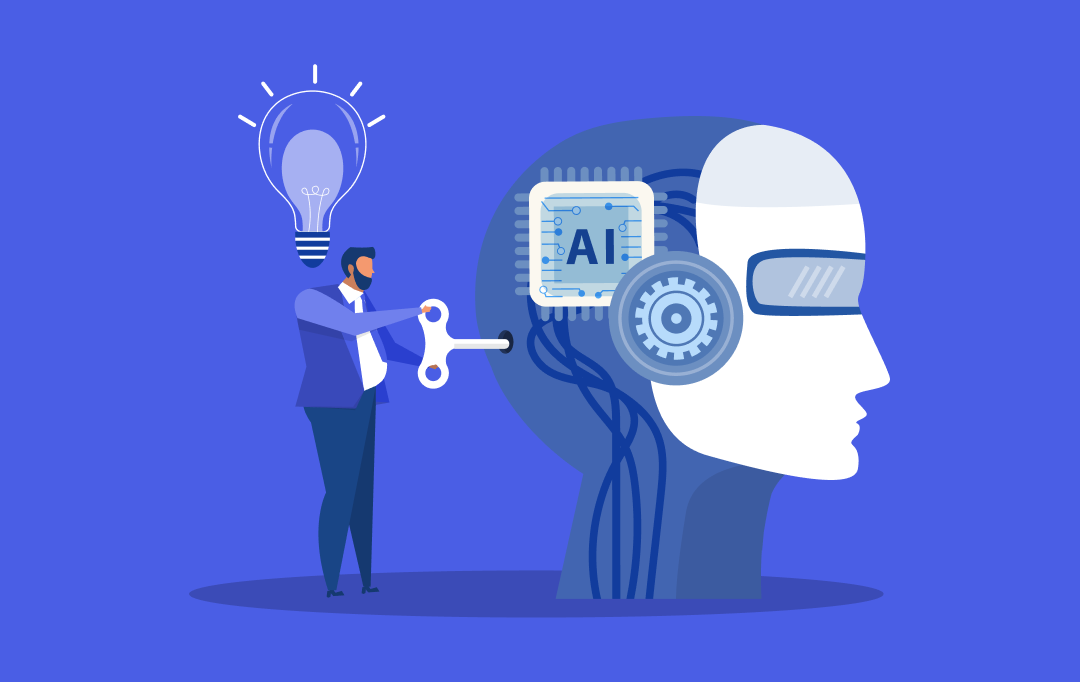- The Key Challenges Enterprises Face in Digital Transformation
- Resistance to Change Across the Organization
- Legacy Systems and Technological Debt
- Lack of Skilled Talent
- Data Overload and Inadequate Data Management
- Budget Constraints and ROI Concerns
- Integration of Emerging Technologies
- Siloed Organizational Structure & Cross-Functional Collaboration
- Cybersecurity, Privacy, and Compliance Risks
- Strategic Solutions to Overcome The Digital Transformation Challenges
- Adopt a Clear Digital Transformation Strategy
- Building a Culture of Innovation and Agility
- Modernizing IT Infrastructure and Leveraging Cloud Solutions
- Harnessing the Power of AI and Automation
- Embracing Data-Driven Decision Making
- Implement a Formal Change Management Strategy
- Strengthen Cybersecurity and Compliance Frameworks
- Emerging Technologies and Their Role in Digital Transformation
- Artificial Intelligence and Machine Learning in Enterprise Solutions
- The Internet of Things (IoT) and Connected Business Models
- Blockchain: Improving Transparency and Security
- 5G and its Role in Scaling Digital Transformation Efforts
- The Future of Digital Transformation in Enterprises
- The Rise of Autonomous Business Operations
- Hyper-Personalization at Enterprise Scale
- The Death of IT Departments (As We Know Them)
- Edge Computing Becomes the New Normal
- Digital Twins for Everything
- Sustainable Technology Integration
- The Human-AI Collaboration Revolution
- How Appinventiv Can Support Your Digital Transformation Journey
- FAQs
Key takeaways:
- Digital transformation challenges are often more about people than technology.
- Key hurdles include legacy systems, data overload, and talent gaps.
- A solid digital strategy and adoption of cloud and AI are critical.
- AI and emerging tech like IoT and 5G drive business efficiency.
- Transformation requires aligning technology with business objectives.
- Success lies in addressing cultural and human aspects, not just tech.
Let’s face it— as a business owner, you know the future is digital. Yet, despite knowing the advantages, why does the journey to digital transformation feel like trudging through quicksand? The reality is, enterprises like yours face several digital transformation challenges that slow progress and, sometimes, make it feel like success is just out of reach. These digital transformation roadblocks can be frustrating and overwhelming, especially when you’re navigating an ever-changing landscape of technology and competition.
For many CEOs and CTOs, the pressure is mounting. You have to keep up with industry shifts while tackling digital transformation problems head-on. It’s not just about adopting new tech; it’s about ensuring that every part of your organization is ready to evolve — from operations to culture, to the very way your teams work.
But here’s the catch: overcoming these digital transformation challenges for enterprises doesn’t have to be impossible. In fact, the roadblocks you face today could turn into massive opportunities for growth tomorrow. How? By understanding these hurdles and approaching them strategically. This blog will break down the key challenges of digital transformation, highlight what’s holding back your progress, and offer clear steps to help you conquer these barriers.
As you read through, we’ll explore how business transformation challenges impact your operations, and how the right solutions can enable smoother, more effective digital shifts. By addressing the challenges of digital transformation in organizations, we’ll help you unlock the true potential of your digital initiatives.
Ready to turn digital transformation challenges and opportunities into your company’s success story? Let’s dive in.
Did you know 70% of digital transformation projects fail due to poor adoption? We can help you turn this challenge into your greatest opportunity with smooth integration and empowered teams.
The Key Challenges Enterprises Face in Digital Transformation
Digital transformation is a game-changer for your business. However, the path to success is rarely straightforward. From the rise of emerging technologies to the evolving demands of customers, enterprises face a variety of digital transformation challenges that hinder growth and slow progress. Let’s explore the biggest challenges of digital transformation that many businesses grapple with today.
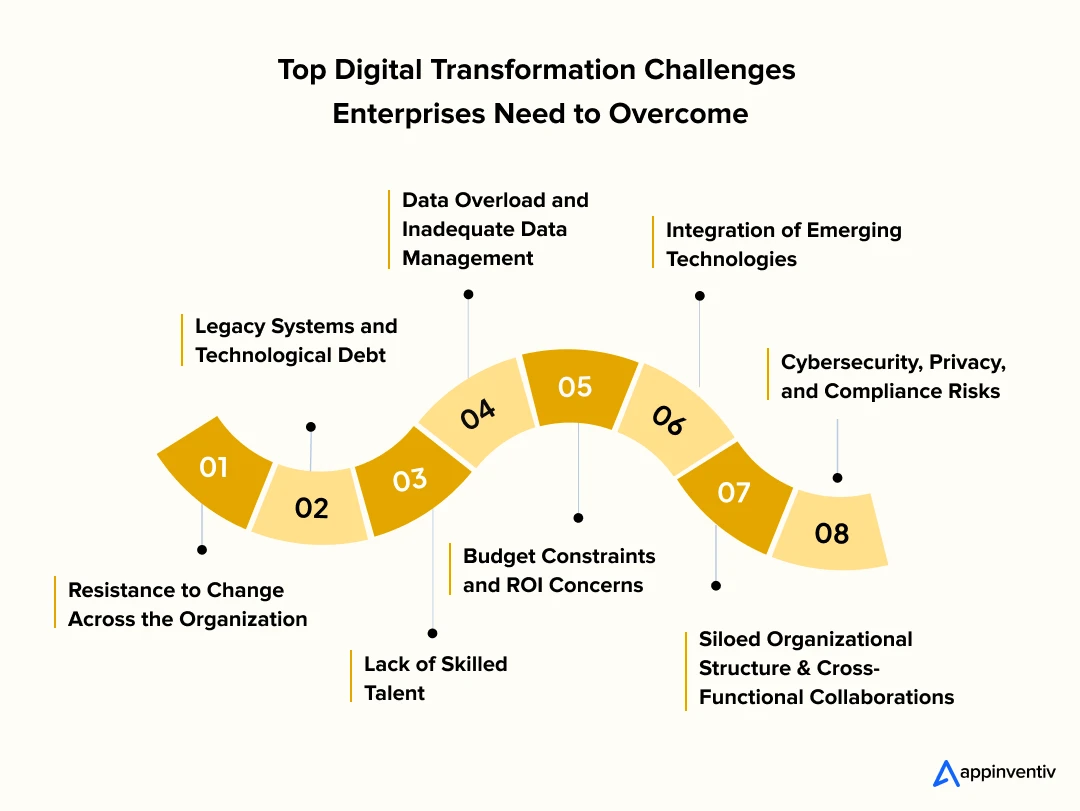
Resistance to Change Across the Organization
One of the most common digital transformation challenges in business is internal resistance. Employees and leaders alike are often hesitant to adopt new technologies or change the way things have always been done. This resistance isn’t just a small inconvenience—it’s a roadblock that can derail entire initiatives.
According to a McKinsey report, 70% of digital transformation projects fail due to this lack of adoption. It’s not just about new tools, but about creating a culture that embraces change. The challenges of digital transformation in organizations often stem from this fundamental issue. Overcoming it requires leadership buy-in, clear communication, and the willingness to train and empower employees to adapt to new technologies.
Legacy Systems and Technological Debt
Many enterprises today still rely on legacy systems that are difficult, if not impossible, to integrate with newer technologies. These systems create a huge barrier to adopting digital tools and platforms. Legacy infrastructure not only increases operational costs but also prevents agility and innovation, leaving your business vulnerable to competitors who are more tech-savvy.
[Also Read: Legacy Application Modernization Strategy: A Comprehensive Guide to Revitalizing Your IT Infrastructure]
This technological debt results in inefficiencies, delays, and missed opportunities. In fact, outdated systems are one of the primary digital transformation roadblocks in this digital ecosystem. Upgrading legacy systems or transitioning to modern cloud-based solutions is essential for any enterprise looking to scale its digital transformation efforts.
Lack of Skilled Talent
Digital transformation is not just about technology; it’s about people. And finding the right talent to drive digital initiatives is one of the key challenges of digital transformation. According to IDC, over 90% of organizations globally will face the impact of the IT talent shortage by 2026, potentially resulting in losses exceeding $5.5 trillion. Whether it’s in data science, cloud architecture, or AI implementation, companies are struggling to find skilled professionals who can take them to the next level.
The challenges of digital transformation in various industries are often exacerbated by this talent shortage. Enterprises must not only invest in upskilling their current workforce but also attract top talent to ensure successful implementation and innovation.
Data Overload and Inadequate Data Management
With the rise of big data, companies are now sitting on massive amounts of information. The challenge? Properly managing, integrating, and leveraging this data for meaningful insights. Data overload is a serious issue, and without the right tools to organize and analyze it, you risk making poor business decisions that could hinder your digital transformation efforts.
Major enterprises fail to use their data effectively, resulting in missed opportunities and an inability to act on key insights. This is where robust data governance strategies and cloud-based solutions can help streamline data management, ensuring it’s clean, accessible, and actionable.
Budget Constraints and ROI Concerns
Cost remains one of the biggest challenges of digital transformation for many enterprises. While digital transformation can drive long-term efficiencies and revenue, the upfront investment required to upgrade systems, invest in training, and adopt new technologies is substantial. For many businesses, the fear of poor ROI on transformation efforts makes them hesitant to invest in change.
However, the right strategy can help mitigate these digital transformation risks and challenges. By taking a phased approach, prioritizing high-impact projects, and demonstrating early wins, companies can start to see the return on their investment sooner than expected.
Integration of Emerging Technologies
The landscape of technology is constantly evolving, and integrating new tools—such as AI, IoT, and blockchain—into your existing systems can be complex. Each new innovation brings new opportunities, but also new challenges. These technologies must not only be integrated into the current infrastructure but must also be adopted in a way that maximizes their potential.
This challenge is especially prominent in industries that are still working with legacy systems or have siloed data management processes. Overcoming these barriers is essential to ensuring the successful integration of AI and other emerging technologies.
Siloed Organizational Structure & Cross-Functional Collaboration
Many enterprises operate within fragmented departmental structures where teams work in isolation with limited communication. This lack of cross-functional collaboration leads to misaligned priorities, inconsistent data usage, and slower decision-making.
As a result, it becomes increasingly difficult to execute cohesive digital transformation strategies across the organization. Siloed teams often duplicate efforts, overlook critical insights, and create friction that hinders innovation. Without unified direction, digital initiatives risk stalling before they gain momentum.
Cybersecurity, Privacy, and Compliance Risks
As enterprises scale their digital transformation efforts, they open themselves up to growing cybersecurity and data privacy threats. With increasing reliance on cloud platforms, interconnected systems, and third-party integrations, the attack surface expands—making businesses more vulnerable to breaches, ransomware, and data leaks.
On top of that, navigating constantly evolving regulatory frameworks such as PCI-DSS, GDPR, or industry-specific standards adds another layer of complexity. Failing to comply can result in hefty penalties, reputational damage, and loss of customer trust. These risks are not just technical issues—they’re strategic threats that can derail transformation altogether.
After looking into the challenges in business transformation, let’s move on to understand their solutions in detail.
Strategic Solutions to Overcome The Digital Transformation Challenges
While the digital transformation challenges may seem daunting, they are not insurmountable. With the right strategy, enterprises can turn these roadblocks into opportunities for growth, efficiency, and innovation. Below, we explore some strategic tips for overcoming digital transformation challenges and accelerate your business’s journey to success.

Adopt a Clear Digital Transformation Strategy
One of the most effective ways to tackle digital transformation challenges for enterprises is by adopting a clear digital transformation strategy. This strategy should be holistic, with a clear roadmap that spans across all departments and business functions. A well-structured plan not only addresses the challenges of digital transformation in organizations but also aligns your digital goals with the overall business strategy.
Having a roadmap allows you to prioritize initiatives, set realistic expectations, and communicate the transformation goals clearly to all stakeholders. Simply put, the planning phase is crucial in mitigating risks, ensuring proper allocation of resources, and building a culture that embraces change.
Building a Culture of Innovation and Agility
One of the common challenges of digital transformation in business is overcoming the resistance to change that exists within an organization. To combat this, building a culture that values innovation and agility is essential. Encouraging employees at all levels to embrace new technologies and digital tools will help break down silos and foster collaboration. A culture of continuous learning and innovation will allow your business to stay ahead of the curve.
Investing in training and development programs for your workforce is key. The challenges of digital transformation in various industries can often be mitigated by ensuring that your team is equipped with the right skills and mindset to implement new technologies. This not only increases employee engagement but also speeds up the digital transformation process, helping you move from legacy systems to a more modern, agile environment.
Modernizing IT Infrastructure and Leveraging Cloud Solutions
One of the most impactful solutions for overcoming digital transformation roadblocks is modernizing your IT infrastructure and transitioning to cloud solutions. Legacy systems and outdated infrastructure are a significant barrier to adopting modern digital tools, but the cloud provides a scalable, cost-effective solution that allows businesses to innovate without the burden of on-premise hardware.
Gartner shows 50% of enterprises will move to cloud infrastructure by 2028. This isn’t just a trend – it’s a fundamental shift in how businesses approach IT operations. Cloud solutions are bound to offer the businesses with flexibility, scalability, and the ability to integrate emerging technologies like AI and IoT seamlessly. By moving to the cloud, they can simply reduce operational costs, enhance collaboration, and improve data accessibility, all of which are key to overcoming digital transformation problems.
Harnessing the Power of AI and Automation
AI and automation are at the core of digital transformation, helping businesses drive efficiency, reduce costs, and improve decision-making. From AI-driven analytics that provide actionable insights to robotic process automation (RPA) that automates repetitive tasks, AI can dramatically transform your business operations.
The potential for AI to optimize processes is limitless, whether it’s in customer service, supply chain management, or financial operations. By automating routine tasks, your employees can focus on higher-value activities, improving both productivity and employee satisfaction.
McKinsey estimates that AI could unlock up to $4.4 trillion in long-term productivity gains across corporate use cases globally. In short, thoughtful adoption—not blind automation—is something that will drive real, scalable impact.
Embracing Data-Driven Decision Making
Data is the lifeblood of digital transformation. Without leveraging big data and analytics, it’s nearly impossible to make informed decisions that drive growth and profitability. One of the biggest digital transformation challenges is dealing with data overload and integrating it across various systems. To overcome this, businesses must adopt a data-driven approach to decision-making.
Having a robust data governance strategy in place is essential to ensure data accuracy, consistency, and accessibility. This also includes investing in advanced data analytics tools that provide real-time insights, enabling business leaders to make more informed, agile decisions.
When your business is equipped with the right tools to analyze and act on data quickly, you position yourself to capitalize on opportunities faster than competitors still relying on outdated decision-making processes.
Implement a Formal Change Management Strategy
One of the most overlooked yet critical elements of digital transformation is managing change across the organization. Without a clear change management framework, even the most well-planned initiatives can face resistance, confusion, and poor adoption.
A successful transformation requires active leadership involvement, well-structured communication plans, and a step-by-step strategy for guiding teams through the transition. This ensures everyone is aligned, engaged, and empowered to embrace the change. In essence, change management isn’t a support function—it’s a core pillar of digital transformation success.
Strengthen Cybersecurity and Compliance Frameworks
To stay ahead of rising digital threats, enterprises must prioritize cybersecurity and compliance as core pillars of their transformation strategy—not afterthoughts. This begins with implementing robust security protocols, including multi-factor authentication, real-time threat detection, and end-to-end encryption to safeguard data across platforms.
[Also Read: IT Compliance Regulations for US Industries: Navigate Compliance with Confidence]
Organizations must also invest in tools and training to ensure teams understand and adhere to compliance standards from day one. Regular audits, data governance policies, and collaboration with compliance experts will help reduce risk and build resilience. A secure, compliant foundation doesn’t just protect your business—it strengthens customer confidence and paves the way for sustainable digital growth.
Struggling with outdated systems, siloed data, or slow adoption? We can modernize your infrastructure, centralize data, and drive seamless user adoption, turning obstacles into growth opportunities.
Emerging Technologies and Their Role in Digital Transformation
The world of technology is evolving rapidly, and staying ahead of the curve is no longer optional for enterprises. Emerging technologies are at the forefront of digital transformation, offering new opportunities to solve business transformation challenges and drive long-term growth. In this section, we will explore the technologies that are shaping the future of digital transformation and how they can help you overcome digital transformation challenges for enterprises.
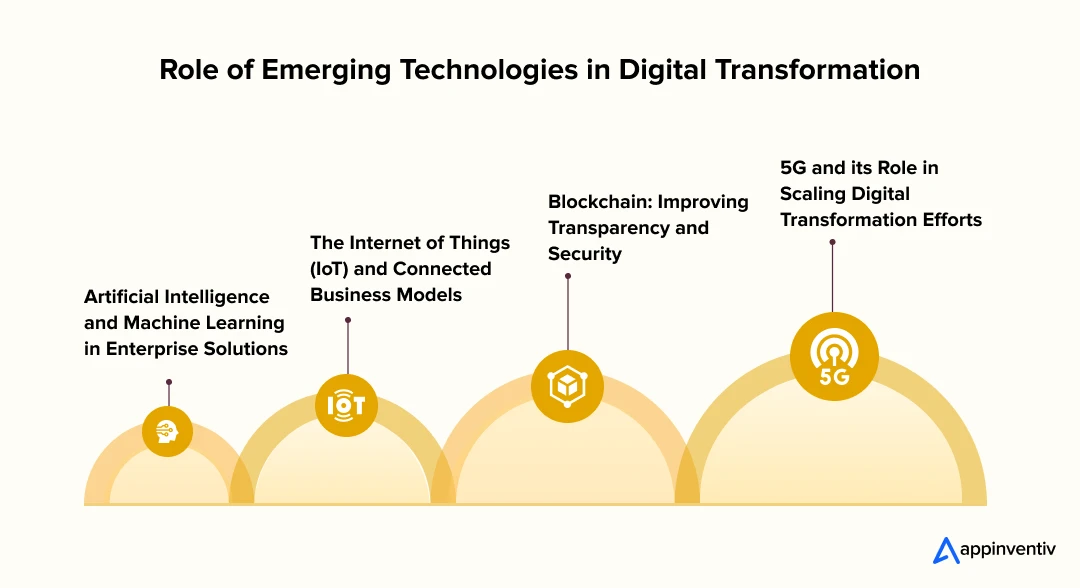
Artificial Intelligence and Machine Learning in Enterprise Solutions
AI and Machine Learning (ML) are at the heart of digital transformation, enabling businesses to automate processes, enhance decision-making, and predict future trends. These technologies help enterprises optimize operations, personalize customer experiences, and make data-driven decisions. AI-driven solutions can address digital transformation challenges by automating repetitive tasks, improving productivity, and providing actionable insights.
The Internet of Things (IoT) and Connected Business Models
IoT connects devices and systems, allowing businesses to collect real-time data that drives smarter decisions and enhances operational efficiency. By integrating IoT into their infrastructure, enterprises can track performance, predict issues, and optimize resource allocation. This technology tackles digital transformation challenges related to data overload, enabling businesses to extract value from vast amounts of information.
A report from Statista predicts 40.6 billion IoT devices by 2034 – organizations embracing IoT will maintain competitiveness through greater connectivity and efficiency.
Blockchain: Improving Transparency and Security
Blockchain technology ensures security, transparency, and immutability of transactions, addressing critical digital transformation challenges in industries like finance, supply chain, and healthcare. It enables secure, decentralized record-keeping, which builds trust among customers and partners.
By leveraging blockchain, businesses can overcome digital transformation risks related to fraud and data breaches, ensuring integrity and accountability.
5G and its Role in Scaling Digital Transformation Efforts
The rollout of 5G is set to accelerate digital transformation by providing faster, more reliable connectivity that supports the growing demand for real-time data and IoT devices. With ultra-low latency and high data speeds, 5G enables businesses to scale their digital efforts more effectively, driving efficiency and innovation across various sectors.
This technology addresses key digital transformation challenges by enhancing communication, supporting remote work, and enabling faster access to critical data, making it crucial for enterprises looking to stay ahead in a connected world.
The Future of Digital Transformation in Enterprises
As technology continues to evolve, so too will the opportunities for digital transformation. Enterprises must stay ahead of emerging trends to navigate digital transformation challenges and unlock the full potential of these innovations. Here are the key trends shaping the future of digital transformation for businesses:
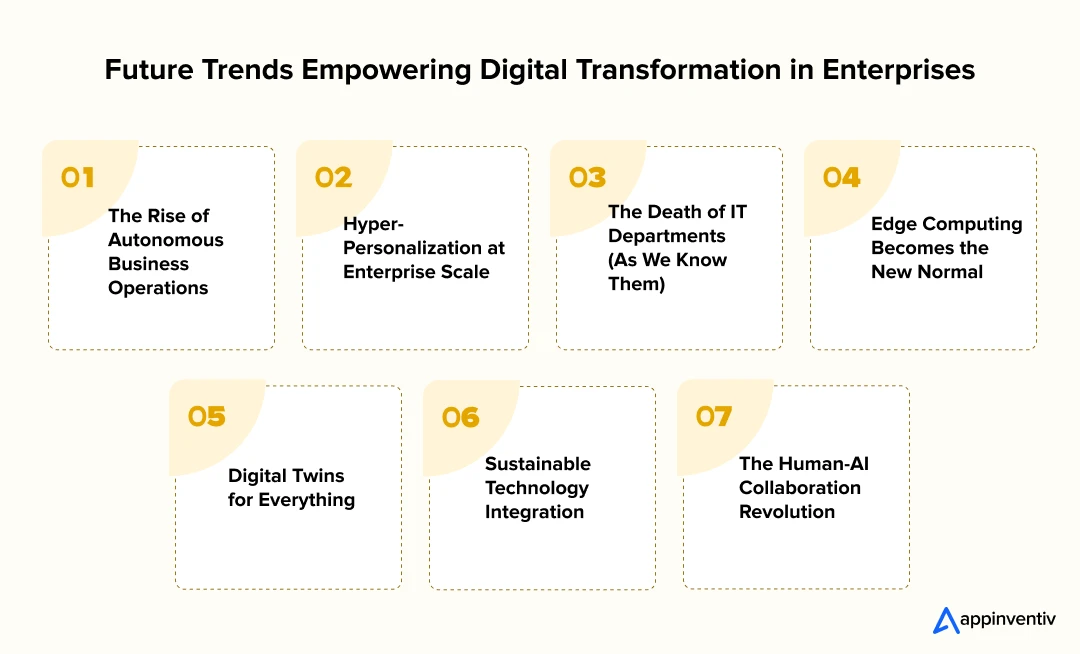
The Rise of Autonomous Business Operations
Businesses are increasingly implementing self-operating systems that handle routine decisions without human intervention. Inventory management systems automatically reorder supplies when stock levels drop below predetermined thresholds. Customer service platforms utilize sentiment analysis to route inquiries to appropriate departments. Marketing campaigns adjust targeting parameters in real-time based on performance metrics and data insights.
This autonomous functionality represents current reality rather than future speculation. However, successful implementation requires organizations to first address fundamental digital transformation challenges. Companies need clean, reliable data, integrated system architectures, and employee confidence in automated technologies to achieve optimal results.
Hyper-Personalization at Enterprise Scale
Organizations are developing sophisticated personalization capabilities that extend beyond customer interactions to encompass employees, partners, and suppliers. Sales teams receive customized dashboard configurations based on territorial assignments and individual selling methodologies. Warehouse personnel access personalized picking routes optimized for their walking patterns and experience levels.
This level of customization requires systems capable of learning individual preferences while maintaining scalability across thousands of users. The technology enables personalized experiences across entire enterprise ecosystems, creating more efficient and engaging interactions for all stakeholders.
The Death of IT Departments (As We Know Them)
Traditional IT departments are undergoing fundamental role transformation, shifting from reactive maintenance providers to proactive business enablers and innovation catalysts. Legacy IT functions focused primarily on system maintenance and issue resolution. Modern IT teams function as business consultants who leverage technological expertise to enable organizational objectives.
This evolution involves transitioning from barrier-focused responses to solution-oriented approaches. Successful transformations require IT professionals to develop business acumen alongside technical skills, positioning technology departments as strategic partners rather than operational support units.
Edge Computing Becomes the New Normal
Edge computing addresses cloud computing limitations by processing data at the point of origin rather than relying on distant data centers. Manufacturing equipment executes decisions directly on factory floors. Retail systems implement real-time pricing adjustments based on localized demand patterns. Autonomous vehicles process sensor data independently without cloud connectivity requirements.
[Also Read: Digital Transformation in Manufacturing: Unlocking Efficiency and Innovation]
This approach delivers improved response times while enhancing operational resilience. Local computing capabilities enable continued functionality during connectivity disruptions, ensuring business continuity across distributed operations.
Digital Twins for Everything
Digital twin technology creates virtual replicas of physical assets, processes, and business operations for testing and optimization purposes. Organizations utilize these virtual environments to test production line configurations without disrupting ongoing operations.
Supply chain simulations enable companies to evaluate disruption scenarios before real-world implementation. Applications extend from office layout optimization to employee scheduling improvements. This technology enables risk-free experimentation and scenario planning across diverse business functions.
Sustainable Technology Integration
Environmental considerations increasingly influence technology procurement and implementation decisions beyond corporate responsibility requirements. Organizations select cloud providers based on renewable energy utilization metrics. AI systems optimize energy consumption patterns to reduce operational costs. Digital processes minimize physical waste generation and travel requirements.
Companies recognize that sustainable technologies often deliver superior business results while improving environmental performance, creating mutually beneficial outcomes for operational efficiency and sustainability goals.
The Human-AI Collaboration Revolution
Human-AI collaboration models emphasize complementary strengths rather than workforce replacement scenarios. AI systems handle repetitive, data-intensive tasks while humans focus on creative problem-solving, relationship management, and strategic thinking. This collaborative approach enables teams to achieve results neither humans nor AI could accomplish independently.
Successful implementation requires substantial organizational investment in AI collaboration skill development. Companies must provide comprehensive training and support to maximize the potential of human-AI partnerships across their operations.
How Appinventiv Can Support Your Digital Transformation Journey
At Appinventiv, we specialize in helping enterprises overcome digital transformation challenges with tailored, end-to-end solutions. With over 10+ years of experience and 3000+ solutions delivered, we are equipped to guide you through every stage of your transformation, from strategy to execution.
Our expertise in emerging technologies like AI, IoT, blockchain, and 5G allows us to modernize your operations, optimize processes, and improve customer experiences. We provide industry-specific solutions that address your unique digital transformation challenges, ensuring that each step of the journey is aligned with your business goals.
As a digital transformation services provider, our track record includes:
IKEA: We implemented an ERP solution that became their biggest ROI measurement source and critical marketing asset, adopted by over 7 IKEA stores.
KFC: We launched seven mobile apps for seven markets in one year, boosting conversions by 22% and earning 4.5-star ratings across app stores.
JobGet: We deployed an AI solution reducing job fulfillment periods from months to days, helping raise $52 million in funding and achieve 2 million+ mobile app downloads.
With 1600+ tech experts, we deliver scalable, secure solutions driving business growth. We’re not just service providers – we’re partners committed to turning digital transformation opportunities into tangible results.
Partner with us to navigate your transformation journey with confidence and accelerate business growth in an increasingly digital world.
FAQs
Q. What are the key challenges in implementing digital transformation?
A. Implementing digital transformation comes with several hurdles, but understanding them can help you navigate the journey. Key challenges include:
- Resistance to change: Overcoming reluctance within teams to adopt new technologies and processes.
- Legacy systems: Updating outdated IT infrastructure that can’t easily integrate with new tools.
- Siloed data: Managing disparate data across systems that hinder unified decision-making.
- Talent gap: Struggling to find the right skills needed to execute transformation initiatives.
- Budget constraints: Balancing the upfront costs of transformation with the expected long-term ROI.
Q. How to overcome digital transformation challenges?
A. Overcoming digital transformation challenges requires a strategic approach, integrating both technology and people. Here’s how we can help:
- Modernize legacy systems: Transition outdated IT infrastructure to scalable, future-ready solutions.
- Centralize data: Consolidate siloed data for actionable insights and real-time decision-making.
- Drive seamless user adoption: Provide tailored training and intuitive solutions to ensure smooth transitions.
- Align digital strategy: Build a clear strategy that translates into actionable, measurable results for your enterprise.
Q. What role does AI play in overcoming digital transformation challenges?
A. AI is a powerful tool in overcoming digital transformation challenges by automating processes, providing predictive insights, and optimizing operations. With AI, businesses can improve decision-making through data-driven insights, enhance customer experiences with personalized solutions, and streamline operations with automation. This technology addresses inefficiencies, reduces operational costs, and drives innovation, making it a key enabler in modernizing systems and accelerating digital adoption.


- In just 2 mins you will get a response
- Your idea is 100% protected by our Non Disclosure Agreement.

How To Build a Digital Twin App? All You Need To Know
Key takeaways: IoT, AI, cloud computing, and data analytics are the main technologies for making real-time, predictive digital twins. Digital twins are revolutionizing the manufacturing, healthcare, and energy sectors and providing significant operational efficiency and cost reduction. 5G, edge computing, and AR/VR not only lift digital twin performance but also provide fast data processing and…

How Enterprises Can Successfully Integrate Emerging Technologies into Their Workflows
Key Takeaways Big changes fail when rushed. Begin with small pilots, measure results, and use emerging tech to scale without breaking what works today. Clean, connected data and strong security are the backbone of successful technology integration. Get those right before layering on AI, IoT, or automation. Don’t chase every new tool. Match tech to…

Digital Transformation Strategies You’ll Wish You Knew Sooner
Key takeaways: Think Big, Not Small: Digital transformation market will reach USD 3,289.4 billion by 2030. Update Legacy Tech: Outdated systems? Modernize them now to boost efficiency and save costs. Go Cloud and API First: Focus on flexible, scalable cloud solutions and APIs for faster, more efficient operations. Make Tech Work for Business: Your tech…

















